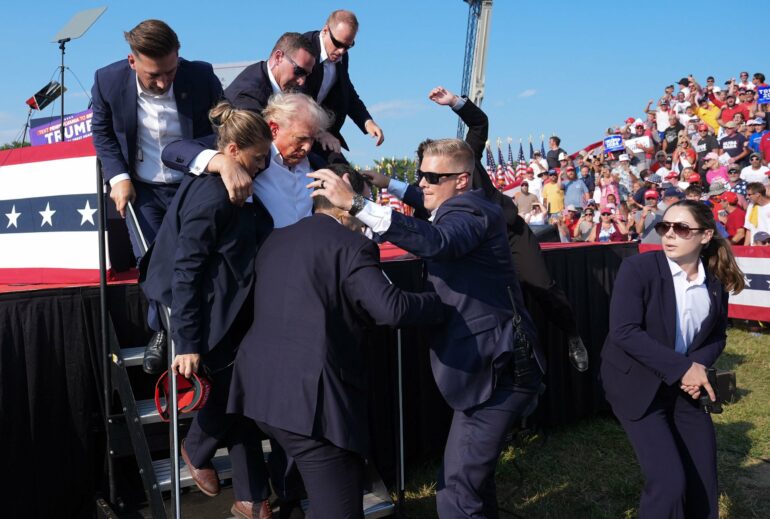In the immediate hours after the assassination attempt on former president Donald Trump on July 13, 2024, social media users posted the same videos, images and eyewitness accounts but used them as evidence for different rumors or theories that aligned with their political preferences.
Among the deluge of rumors, one TikTok creator narrated the instantly iconic photo of Trump raising his fist, ear bloodied as he emerged from the Secret Service scrum. “People are wondering if this photo is staged?” His answer: “Yes.”
People across the political spectrum, including President Joe Biden, questioned why the Secret Service had failed to prevent the attack. But then some people took this critique further. An influencer on the social media platform X posted an aerial photo and asked how an armed assailant could make it to an unsecured rooftop, concluding, “This reeks of an inside job.”
As researchers who study misinformation at the University of Washington’s Center for an Informed Public, we have seen groups of people coming together during previous crises to make sense of what is going on by providing evidence and interpreting it through different political or cultural lenses called frames. This is part of a dynamic process scholars call collective sensemaking.
Spreading rumors is a part of this process and a natural human response to crisis events. Rumors, regardless of their accuracy, help people assign meaning and explain an uncertain or scary unfolding reality. Politics and identity help determine which frames people use to interpret and characterize evidence in a crisis. Some political operatives and activists may try to influence these frames to score points toward their goals.
In the aftermath of the assassination attempt, our rapid response research team observed rumors unfolding across social media platforms. We saw three politically coded frames emerge across the spectrum:
claiming the event was staged
criticizing the Secret Service often by blaming Diversity Equity and Inclusion initiatives
suggesting the shooting was an inside job
‘It was staged’
On the anti-Trump extreme, a rumor quickly gained traction claiming the shooting was staged for Trump’s political gain, though this has slowed as more evidence emerged about the shooter. One creator questioned if the audience were crisis actors because they did not disperse quickly enough after the shooting. Others pointed to Trump’s history with World Wrestling Entertainment and reality television, suggesting he had cut himself for dramatic effect like pro wrestlers. Entertainment professionals weighed in, saying Trump had used fake blood packets found in Hollywood studios.
The staged rumor resonated with a conspiratorial frame we’ve seen people use to process crisis events, such as accusations of a false flag event or crisis actors being used to facilitate a political victory.
Secret Service failings
On social and mainstream media, we saw…



